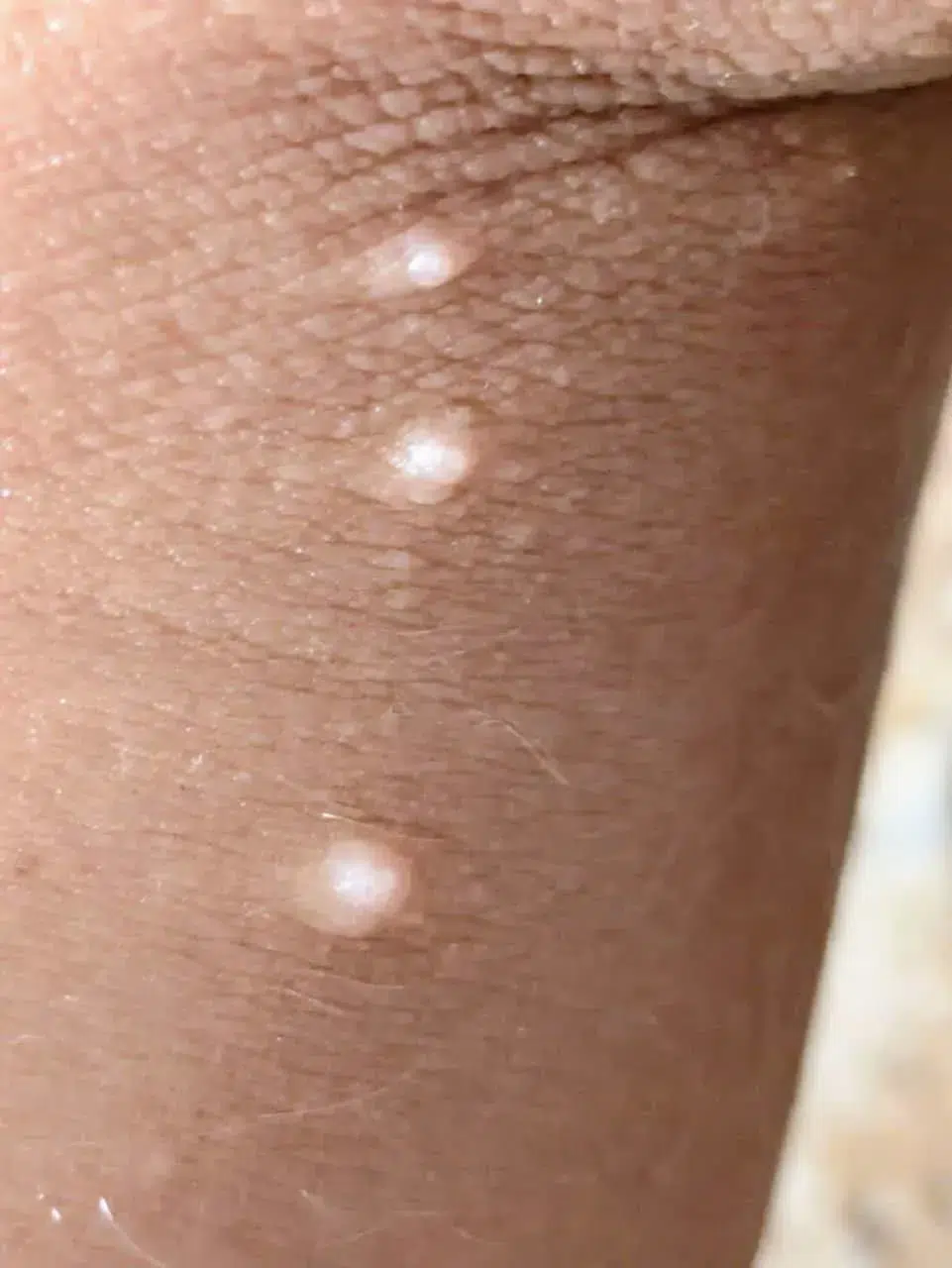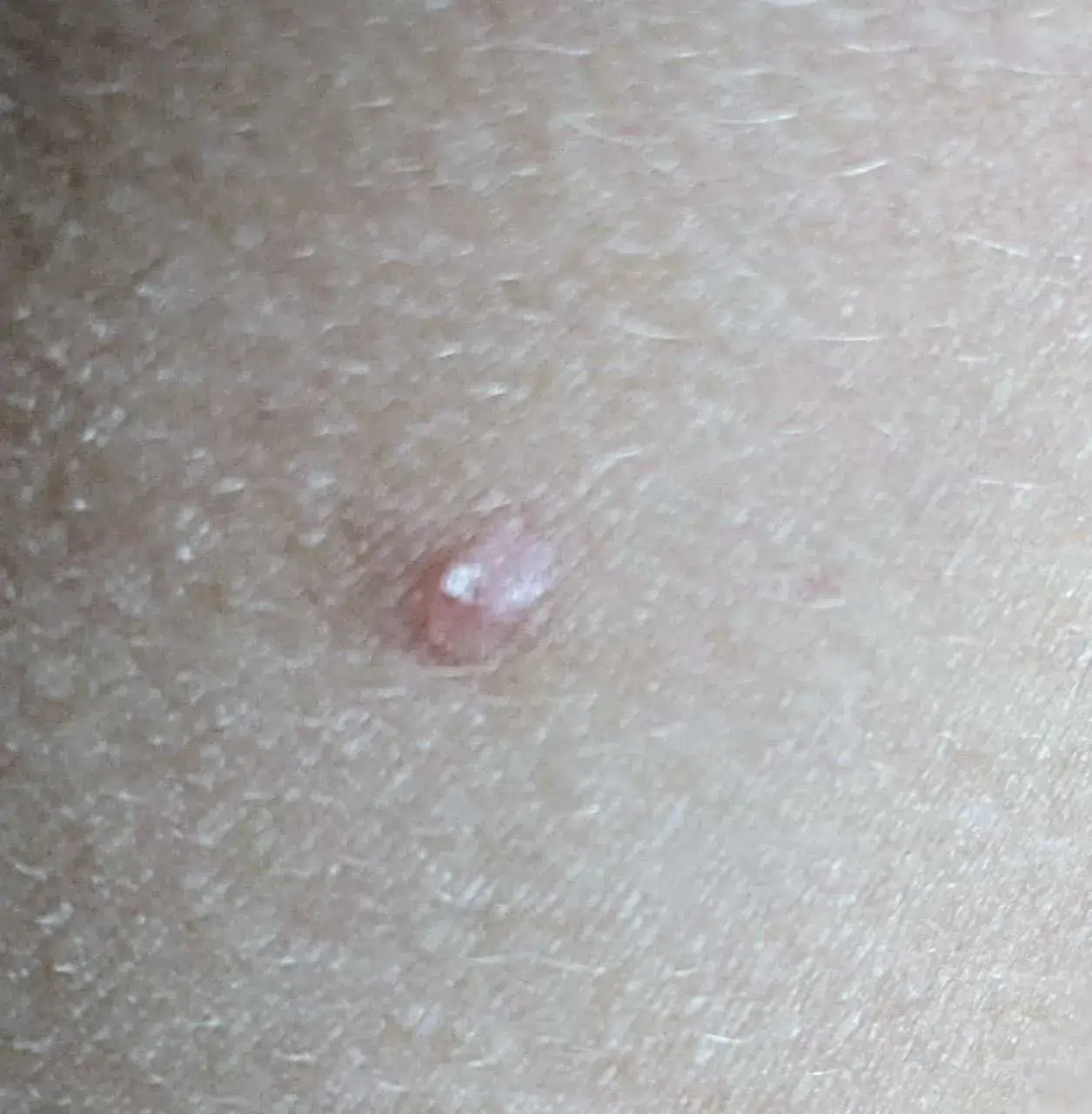Molluscum Contagiosum in Children: Symptoms, Transmission, and Treatment
What is molluscum contagiosum, and why does it affect children?
Molluscum contagiosum is a viral skin infection caused by a poxvirus. It appears as small, round bumps (papules) on the skin, varying in color and featuring a characteristic central dimple, which is key to diagnosis.
This condition is especially common in childhood. It tends to affect children with sensitive skin or those who have atopic dermatitis, as their weakened skin barrier makes it easier for the virus to enter.
Although not considered a serious medical issue, its visible appearance and the risk of spreading to others often cause concern among parents. The look of the bumps may be unsettling, and the potential for infecting siblings or classmates leads many families to seek advice or treatment. While the infection is benign, managing the symptoms and preventing it from spreading are important priorities for those affected.
How does molluscum contagiosum spread among children?
Molluscum contagiosum spreads in two main ways:
Direct skin-to-skin contact is the most common form of transmission. This can occur during play, sports, or any situation involving physical closeness. Even brief contact with infected skin can pass on the virus.
Contaminated objects (fomites): The virus can survive for a short time on surfaces. Sharing items that have touched infected skin can lead to indirect transmission. Common sources include:
Towels: Sharing towels can spread the virus easily.
Clothing: Underwear or swimsuits that touch lesions are of particular concern.
Toys: In nurseries or play areas, toys that come into contact with lesions can spread the virus to other children.
Sports equipment: Items like mats that touch the skin can also be a source of infection.
Self-inoculation—spreading the virus from one part of the body to another by scratching or rubbing the bumps—is also common. Good hygiene and not sharing personal items are essential to prevent both transmission and self-infection.
The virus does not spread through pool water, but it is still wise to cover the bumps with waterproof bandages during swimming or contact sports.
Symptoms of molluscum contagiosum in children
Symptoms usually appear 2 to 7 weeks after exposure. Early identification is key for prompt management.
Typical features of the skin bumps include:
Small, smooth, round bumps that may be skin-colored or slightly pink.
Size and shape: They generally measure 2 to 5 mm, with a small central dimple.
Shiny, pearly appearance that makes them easier to identify.
These bumps often appear in:
Exposed or folded areas such as the face, neck, armpits, arms, and hands.
The trunk and limbs are also common locations.
They almost never appear on the palms or soles, which helps distinguish them from other conditions.
The bumps are usually painless, but scratching can cause itching or inflammation, increasing the risk of spreading. Avoiding scratching is important to prevent further skin issues and transmission.
How long does molluscum contagiosum last?
The bumps usually go away on their own without medical treatment. This natural resolution typically takes between 6 months and 2 years. In most cases, no permanent scars are left behind.
The duration depends largely on the child’s immune system. A strong, developing immune response clears the virus more quickly. In children with weakened immune systems, the condition may last longer.
Do you think your child’s bumps might be molluscum?
Available treatments for molluscum contagiosum
Treatment is not always necessary and is only recommended in certain situations—such as numerous lesions, sensitive areas (like the face or genitals), or symptoms like itching or irritation. A healthcare provider will decide the best approach.
Treatment options include:
Curettage: Physically removing the bumps with a small instrument. It’s fast and effective but may require local anesthesia in sensitive areas or young children.
Cryotherapy: Freezing the bumps with liquid nitrogen. The cold destroys the infected skin cells. It may cause a burning sensation.
Topical treatments: Medicines such as potassium hydroxide (which dissolves the infected skin), tretinoin, imiquimod, or benzoyl peroxide may be prescribed depending on the case. These should only be used under medical supervision to avoid irritation.
Photodynamic therapy (PDT): Used in special cases when other treatments don’t work. It involves applying a light-sensitive solution to the bumps, which is then activated with light to destroy infected cells.
While these treatments can be effective, none completely eliminate the virus or guarantee that the bumps won’t return. Some treatments may also leave minor scars or changes in skin color.
Does it need treatment, or will it go away on its own?
In most cases, molluscum contagiosum resolves without treatment. Doctors often recommend simply observing the condition unless it causes discomfort, spreads rapidly, or affects appearance.
How to prevent the spread of molluscum contagiosum among children
Prevention is key to reducing the spread. Here are some essential tips:
Keep the skin well-moisturized, especially in children with eczema. Use unscented emollient creams regularly, especially after bathing, to strengthen the skin’s protective barrier.
Avoid scratching or touching the bumps. Teach children not to scratch or pick at the bumps. Keep nails short and consider using bandages to discourage touching.
Cover visible bumps with waterproof or occlusive dressings during close contact, such as playing or swimming in public pools. Change bandages regularly and clean the area gently each time.
Do not share towels, clothing, or toys that may have come into contact with the bumps. Each child should use their own hygiene items. Wash clothing and towels in hot water to help eliminate any virus particles.
Wash hands thoroughly after touching affected areas. Soap and water are best. Alcohol-based hand sanitizer can help, but doesn’t replace proper handwashing.
When to see a specialist
You should consult a healthcare provider if:
The bumps grow quickly or multiply rapidly.
They appear in sensitive areas such as around the eyes or genitals.
There are signs of infection like redness, pus, or pain.
Your child has a weakened immune system or severe eczema.
The bumps are causing intense itching.
A dermatologist can evaluate the condition and recommend appropriate treatment to relieve symptoms or speed up recovery.





